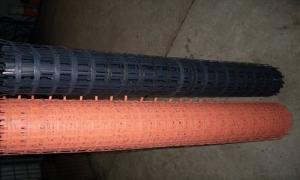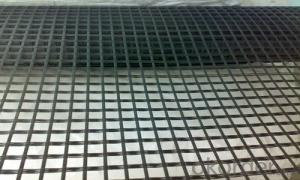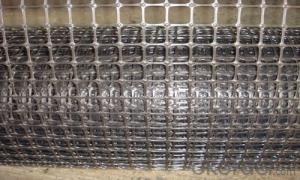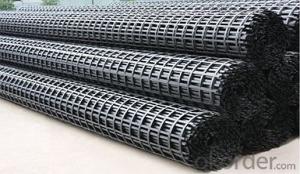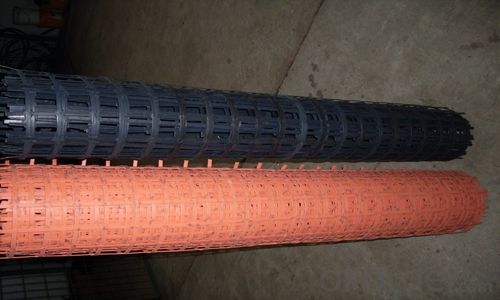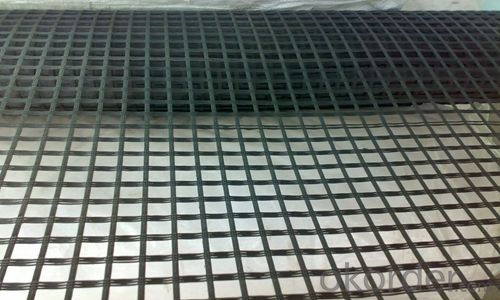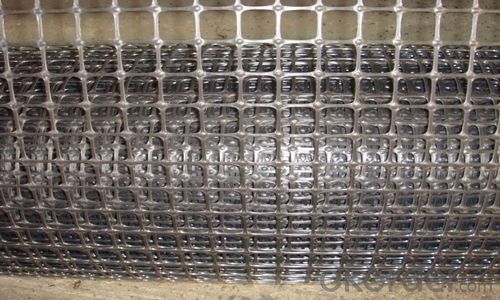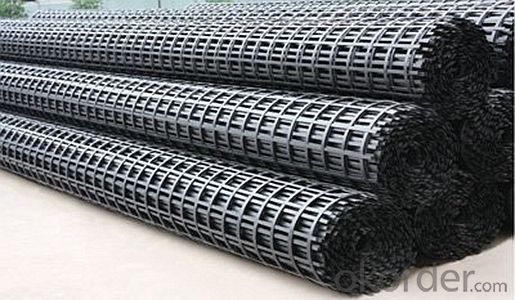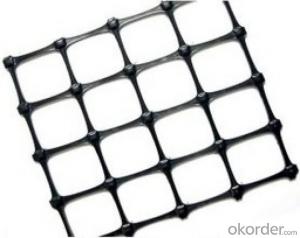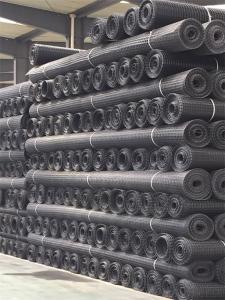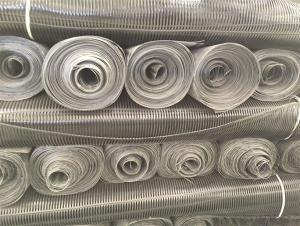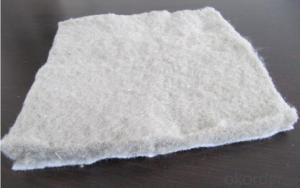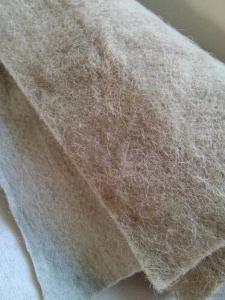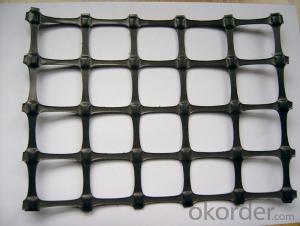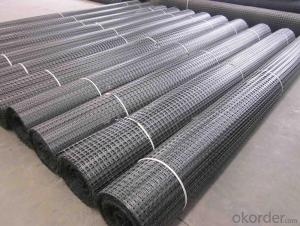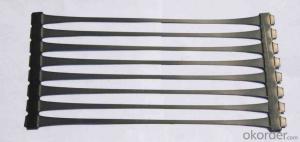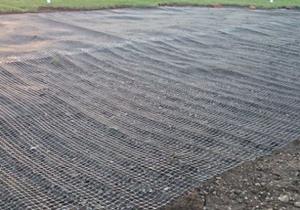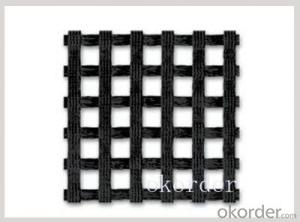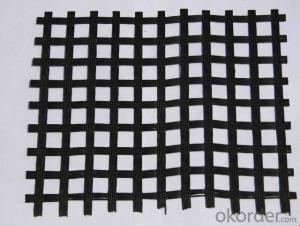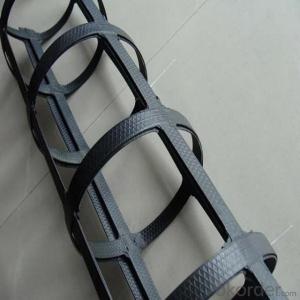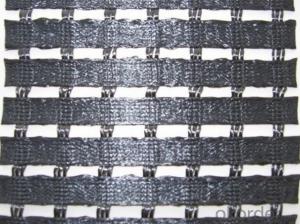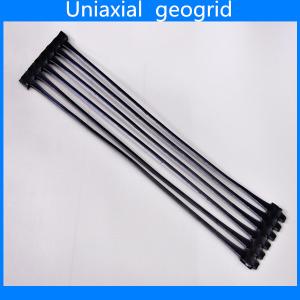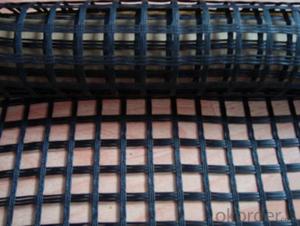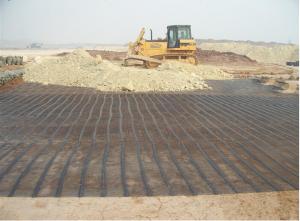Road Reinforcement Geogrids for Civil Engineering Construction with Good Toughness
- Loading Port:
- China main port
- Payment Terms:
- TT OR LC
- Min Order Qty:
- 1000 m²
- Supply Capability:
- 10000000 m²/month
OKorder Service Pledge
OKorder Financial Service
You Might Also Like
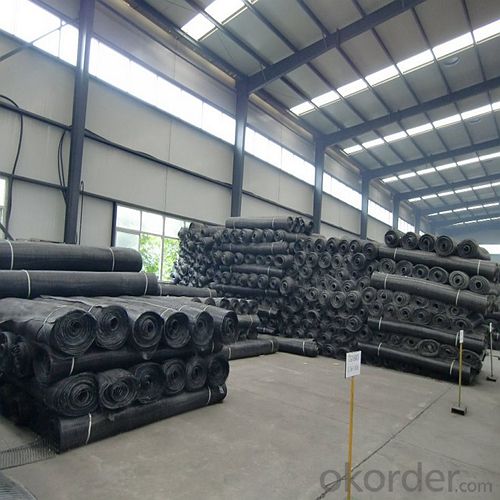
Introduction
Type:
Geogrids
Place of Origin:
Shandong, China (Mainland)
Brand Name:
Deming
Material:
Fiberglass
width:
4-6m
roll length:
30-50m
Biaxial polypropylene geogrid
The outlook of the biaxial geogrid is net work structure like a square. It uses polyester as its raw material and is made of high molecular polymer through extrusion, formed and punched before longitudinally and laterally stretched. This kind of material has a high tensile longitudinally and horizontally, which can be used to reinforce the basement.
Feature:
High flexibility and large range
Slopes and subgrades with rails are a serious problem in railroad construction. Under high pressure the layers slide and deform consequently causing rail deformation, which requires closing railroad segments for a long time. Geogrid application allows carrying out comlex repair operations of the necessary road segment in shortest time (which is very essential in transportation)
Packaging & Shipping
Packing: PLASTIC FILM INSIDE, AND WOVEN BAG OUTSIDE
Shipping: About 15 days after receipt the deposit
geotextile fabric
permeability,filtration,easy for construction
ISO and CE certificate
Good quality and competitive price
Our Service
Quality assurance
1.On a regular basis or as per your request,we entrust national testing agencies to conduct quality inspections
2. Strictly in accordance with the ISO9001-2008 international quality system standard,we monitor and manage the whole process throughout production,quality testing,and measurement to ensure product quality
3. For quality-related construction delay or substandard construction(except for damage or losses due to customer’s responsibility or irresistible natural disasters),we have refunding,replacement,and repair services.We will respond to customers’ feedbacks on quality issues within 24 hours.
After-sales service
1.In order to provide customers with comprehensive technical support,we will provide technical and other related information upon request in a timely manner.
2.In required,we will appoint specialized technicians to the construction site to give technical trainings to construction people,and offer technical guidance throughout the whole construction process.
3.For damage due to shipment and delivery,after we receive the complaint,we will check the issure through provided pictures and videos.If our responsibility is confirmed,we wil offer free replacement.
4.When the construction is completed,as your request,our technical staff may participate in the final acceptance.
FAQ:
Q: What kind of payments does jenor support?
A: T/T, L/C, Cash are accepted.
Q: Do you charge for the samples?
A: Accordeing to our company policy, the samples are free, we only charge the freight fee. And we will return the freight fee during the next order.
Q: Can you produce according to customers' design?
A: Sure, we are professional manufacturer, OEM and ODM are both welcome.
Q: Do you have other products?
A: Yes, please check the pictures:
- Q: Are geogrids resistant to chemicals and environmental degradation?
- Yes, geogrids are generally resistant to chemicals and environmental degradation. They are designed to withstand exposure to various chemicals and harsh environmental conditions, ensuring long-term durability and performance.
- Q: Are there any limitations or disadvantages of using geogrids?
- Yes, there are some limitations and disadvantages of using geogrids. Firstly, geogrids are not suitable for all types of soil conditions and may not be effective in areas with highly cohesive or expansive soils. Secondly, geogrids have limited tensile strength and may not be able to withstand heavy loads or extreme environmental conditions. Additionally, geogrids require proper installation techniques for optimal performance, which may increase the overall project cost. Lastly, regular maintenance and inspection are necessary to ensure the long-term effectiveness of geogrids, adding to the maintenance expenses.
- Q: Bi directional plastic geogrid is suitable for engineering
- Wharf cargo yard and other permanent bearing foundation reinforcement.Supply geogrid.
- Q: Do geogrids provide reinforcement to geosynthetic clay liners in landfill caps?
- Yes, geogrids can provide reinforcement to geosynthetic clay liners in landfill caps. Geogrids are commonly used to enhance the stability and load-bearing capacity of geosynthetic clay liners by providing additional tensile strength and preventing lateral displacement of the clay liner. This reinforcement helps to improve the overall performance and longevity of landfill caps.
- Q: Can geogrids be used in stormwater detention systems?
- Yes, geogrids can be used in stormwater detention systems. Geogrids are commonly used as a reinforcement material in these systems to enhance the stability and strength of the soil. They help to prevent soil erosion, improve drainage, and increase the overall efficiency of stormwater detention systems.
- Q: Do geogrids provide long-term stability to slopes?
- Yes, geogrids provide long-term stability to slopes. Geogrids are commonly used in slope reinforcement systems to increase the strength and stability of slopes. These materials effectively distribute loads, reduce soil erosion, and enhance soil reinforcement over time, thereby ensuring long-term stability for slopes.
- Q: Are geogrids effective in erosion control?
- Yes, geogrids are effective in erosion control because they provide reinforcement to the soil, preventing it from eroding and stabilizing slopes.
- Q: Can geogrids be used in ground stabilization for pipelines?
- Yes, geogrids can be used in ground stabilization for pipelines. Geogrids are commonly used in pipeline construction to reinforce the soil and prevent lateral movement or settlement. They provide additional support and stability to the ground, ensuring the pipeline remains in place and minimizes the risk of damage or failure.
- Q: Can geogrids be used in reinforcement of soft soils?
- Yes, geogrids can be used in the reinforcement of soft soils. Geogrids are commonly used in civil engineering applications to stabilize and reinforce weak soils. They provide tensile strength and distribute loads, improving the overall stability and load-bearing capacity of the soil.
- Q: What is the recommended installation method for geogrids?
- The recommended installation method for geogrids is to first prepare the ground surface by removing any vegetation and loose materials. Then, the geogrid should be unrolled and laid directly on the prepared ground, ensuring it is properly aligned and flat. It is recommended to use anchor trenches or anchor plates to secure the geogrid in place. Finally, backfill material is placed over the geogrid to provide support and enhance its performance.
Send your message to us
Road Reinforcement Geogrids for Civil Engineering Construction with Good Toughness
- Loading Port:
- China main port
- Payment Terms:
- TT OR LC
- Min Order Qty:
- 1000 m²
- Supply Capability:
- 10000000 m²/month
OKorder Service Pledge
OKorder Financial Service
Similar products
Hot products
Hot Searches
Related keywords
